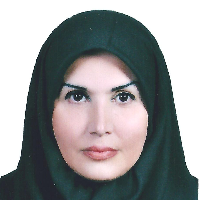Principles and criteria affecting the physical identity shaping Iranian contemporary architecture (case study of the Second Pahlavi period)
Architecture in the Second Pahlavi period is characterized by the triangle of the western culture and civilization influence, Iranian historical heritage with starring role of pre- and post- Islamic architecture and the emergence of architecture from the heart of this period. In this period, known as the millennium of the modern architecture in Iran, architects such as Louis Kahn and Hassan Fathy set forth the historical value and experiences in the architecture of the past and as such adopting a nostalgic view toward traditional architecture, they addressed its revitalization in terms of design and implementation. In most of the contemporary buildings of Tehran not all of them, a form imitation of Iranian traditional architecture or the contemporary western one has taken place. Numerous notable examples are certainly inappropriate patches of the environment and architectural profession. It would be considered as a variable affecting Tehran public building issues and investigated during the present study. This research reviews the physical identity of the public buildings in the Second Pahlavi period. Library method was initially adopted to investigate the factors affecting the physical identity formation during the Second Pahlavi period. Then, the architectural experts and scholars were asked to complete the questionnaire encompassing the points from the library analysis which were studied in the public buildings of the Second Pahlavi period. The statistical population comprised 150 architectural scholars. Among the findings of this research are the major developments related to the Second Pahlavi period including civil projects and formation of the residential units and complexes. Pahlavi architecture is a transition period from the traditional architecture to the modern one. The modern architecture generated through the Second Pahlavi period was broadly backed by the European architecture mainstreams including the international style of Staatliches Bahaus, Le Corbusier artworks, Frank Lloyd Wright products, etc. Its outcome was Iranian modern architecture that has been called pseudomodern architecture. Given that after the rise of modernism, the regionalism approach entails the ample challenges related to interactions and confrontations of the modern architecture of the cultural- regional identities, the main research question is that which indices and concepts have been focused during the design of some works related to the mentioned period.
- حق عضویت دریافتی صرف حمایت از نشریات عضو و نگهداری، تکمیل و توسعه مگیران میشود.
- پرداخت حق اشتراک و دانلود مقالات اجازه بازنشر آن در سایر رسانههای چاپی و دیجیتال را به کاربر نمیدهد.



